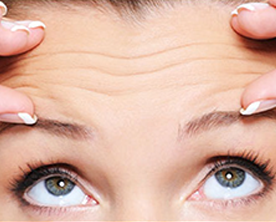Who doesn’t want to look young? Every body does. The human desire to look and live young, and too, forever, has led to the emergence of a market that turned into a global industry. In the past few decades, the market for anti-aging products and services has been valued at an estimated $200 billion and continues unabated. By 2015, the anti-aging industry will grow by more than 70% in the US, by 73% in Europe, by 72% in Japan and by more than 80% in Asia Pacific. In Myanmar, there are many takers of the anti-aging products.
The global wellness products industry is an almost 600 billion industry, amongst which anti-aging is one of the fastest growing categories followed by the global cosmetics and toiletries industry which is a $300 billion industry, It’s estimated that the anti-aging market will reach a trillion dollars by 2020. The strong desire of consumers to look and feel healthy as they age fuels the business potential for both current and future distributors.Despite the economic downturn, consumers are spending money on anti-aging products, indicating that they prize the retention of their youthful looks above all other areas of beauty and personal hygiene. It’s estimated, in fewer than 10 years, people aged 60 years and older will outnumber children under 5 for the first time in history and the over-65 population is expected to double by 2050. Many consumers are interested in learning how to achieve a healthy lifestyle.
Today’s anti-aging market is expanding. Wrinkles are no longer considered the only sign of aging. Age spots, hyperpig¬mentation, uneven skin texture, dark under eye circles, dry skin, and even hair related problems are now topping lists of anti-aging concerns among consumers. Spending on anti-aging products is expected to reach $280 billion by 2017, according to a world business analysts report. With this level of projected growth, it’s no surprise that beauty and personal care brands and manufacturers around the world are closely monitoring consumer trends
The constant demand for new beauty products is leading to exciting new innovations
As with all beauty and personal care products, UV products must be aesthetically appealing. Over the last decade, some of the most interesting beauty product innovations have occurred in UV absorbers. For a population increasingly concerned with skin cancer and preventing signs of aging, UV absorbers are being easily and readily incorporated in all kinds of products from sprays to lotions, creams, serums, and gels.
In the last few years, product developers and formulators have focused on two types of UV absorbers in sunscreen products: organic and inorganic. Regardless of the type used, beauty brands are challenged to decrease whitening in products while still creating a high SPF, long-lasting sunscreen product. To address this, product developers have turned to various silicones as film formers and dispersants to boost a product’s SPF(sun protection factor).
Natural Products
In anti-aging and beauty trends, the desire for more natural ingredients is one of the fastest growing around the world. According to a report, the natural personal care market is predicted to reach $7 billion in 2015 in the U.S. alone. As consumer demand for natural products increases, product developers are developing new products.
Natural oils such as argan, marula, coconut and almond have historically been popular ingredients for hair care, but today these oils are gaining recognition as a versatile option for skin care products as well. Active ingredients like corn or beets are also being used to derive lactic acid for products. The beauty industry has made great strides in natural products, but there is a lot more innovating to do. The cost of natural ingredients often exceeds synthetic counterparts,creating even more challenges for brands and product developers tasked with keeping costs down. Natural products can also be very chemically complex, and extensive testing must be done to determine toxicological issues and identify allergens. Achieving the same function-ality, feel and aesthetic as synthetic products often requires a combination of natural ingredients.
Multifunctional Busy and cash-tight consumers are demanding smarter products that provide more than one benefit. Products that claim to both hydrate and contain antioxidants generate the highest levels of interest among consumers. As a result, there is increased focus in the industry to create products that perform at least two functions. The rapid growth in the popularity of BB and CC creams, which provide both skin care and cosmetic benefits, are just one example. Usage of BB creams alone have increased by 4% since 2014. Balancing these ingredients is critical to creating multifun¬ctional products that also have the aesthetic appeal consumers expect. The addition of oil-in-water or water-in-oil emulsifiers also help create a more stable and multifun¬ctional product Anti-aging in Hair Care Products One of the newest emerging trends in anti-aging is in hair care. Just as skin ages with time, hair becomes more brittle and prone to breakage over time, resulting in hair that’s coarser, duller and less voluminous. To address this and meet growing consumer demand, the beauty industry is creating new products designed to protect hair from free radical damage and other elements that can weaken hair as it ages. Anti-aging formulations are being added to products ranging from shampoos and conditioners to serums to meet this growing demand.
Among the new anti-aging hair care formulations is an age-defying hair shine produc which was recently developed to increase hair strength, shine and protection. The use of argon Oil helps repair free radical damage and increase hair’s shine. Other oils are used as an emulsifier to provide stability and moisturizing, light hair conditioning. Additional ingredients being used for anti-aging hair care include niacinamide, omega 3, caffeine, panthenol and essential fatty acids. As with all new beauty and personal care products, developers try to maintain the aesthetic appeal consumers expect in a product’s look, feel, texture, scent and colour while also adding functional ingredients that protect against UV, excessive heat and free radical damage that cause hair to age. Seamlessly integrating these benefits into existing hair care products will continue to challenge chemical formulators and beauty product developers.
Rapid Growth
The rapid growth of the beauty industry will continue to drive innovative products in the anti-aging market. Companies and brands are spending time and money on product innovation and new formulations to meet and drive consumer trends. The science behind products must reflect consumer trends, from UV protection to natural ingredients, multifun¬ctional products and anti-aging hair care. It is incredibly important that product developers and beauty industry suppliers remain connected to emerging trends to create products that embrace the needs of today’s consumer.
Beauty professionals are trying their best to stay ahead of consumer trends, but also to develop innovative formulations that exceed demands. Sometimes consumers’ expectations drive the industry, and other times it’s formulation breakthroughs that drive consumer demand. Amidst the advancements in beauty and personal care products, continuing to deliver innovative formulations and products has never been more important.










